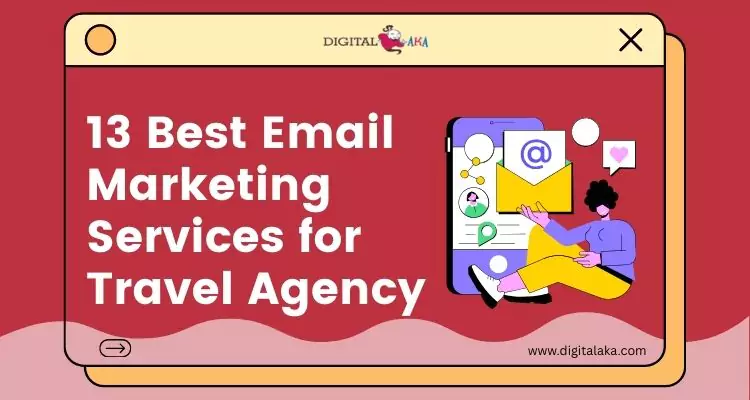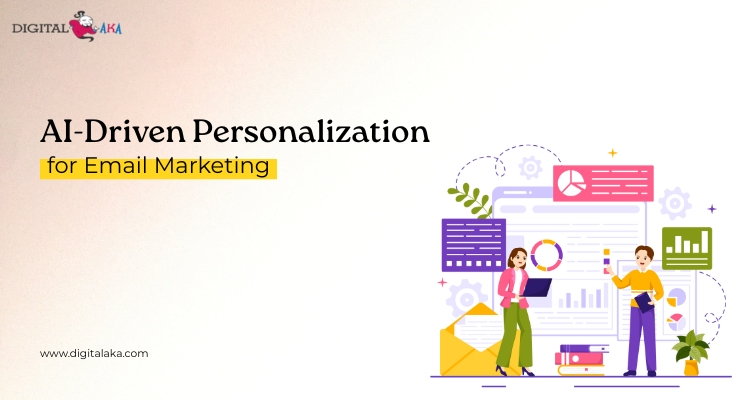
Transactional Email Service- 5 Best Providers & Features
April 2, 2025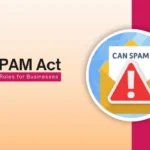
CAN-SPAM Act- Email Marketing Rules for Businesses
April 11, 2025Email marketing is a great way to talk to your customers, sell more products, and grow your business. But some businesses try to grow fast by buying email lists. This may look like a quick way to reach more people, but it often causes problems. When you buy email lists, you are sending emails to people who didn’t ask for them. This can make them upset and damage your brand. It can also break email laws, and your messages may end up in the spam folder.

In this blog, we’ll explain what buying email lists means, the risks and problems it brings, and some common myths about it. More importantly, we’ll show you smarter and more honest ways to grow your list. These better methods help you get real results and build strong, long-term relationships with people who truly want to hear from you.
Table of Contents
What Does Buying Email Lists Mean?
Buying email lists means paying a company to get a list of email addresses. These email addresses usually belong to people or businesses. The lists can be grouped by age, job, where people live, or what kind of work they do. Some businesses buy these lists to try and sell their products or services quickly instead of slowly collecting emails from real interested people.
At first, this might sound like a fast and easy way to reach many people. But there are big problems with it. Most of these email addresses are taken (or “scraped”) from websites, social media, or online directories without permission. This means the people on the list may not want to get emails from you. Also, the emails might be old or fake. Using these lists can hurt your business, get your emails marked as spam, or even get you in legal trouble.
Pricing
| Trail Plan | Standard Plan | Premium Plan | Professional Plan |
| $50 | $145 | $185 | $225 |
| Sending Limit | Sending Limit | Sending Limit | Sending Limit |
| 1000 Emails/Hour | 1500 Emails/Hour | 3000 Emails/Hour | 5000 Emails/Hour |
Why Businesses Consider Buying Email Lists
Some businesses choose to buy email lists instead of building their own. Here are the main reasons why:
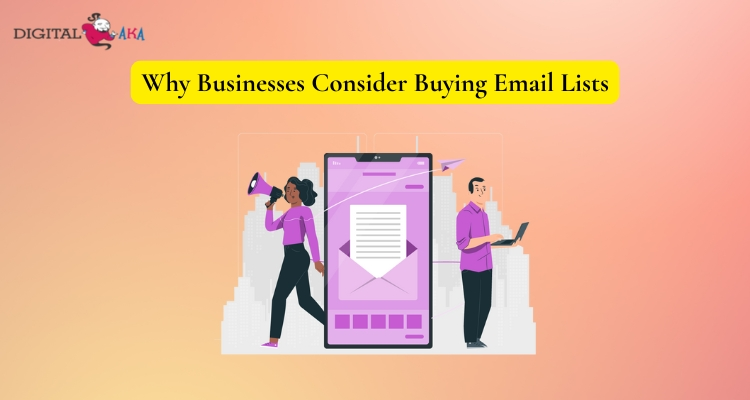
1. It’s Fast
- Growing your email list takes time.
- You have to make a website, share good content, and wait for people to sign up.
- Buying a list gives you email addresses right away, which saves time.
2. It Seems Cheap at First
- Making content, running ads, and using social media all cost money.
- Buying an email list may look like a cheaper option.
- Businesses think they can save money by reaching more people faster.
3. More Contacts = More Sales (They Think)
- Some people believe that having more email addresses means more chances to make a sale.
- They hope that sending emails to thousands of people will get them more customers.
The Risks of Buying Email Lists
Buying an email list might seem like a quick and easy way to reach new people, but it comes with many risks. Here’s why it’s not a good idea:
1. Legal Problems
Some laws control how businesses can send marketing emails. These include the CAN-SPAM Act in the US, the General Data Protection Regulation (GDPR in Europe, and CASL in Canada. These laws say you must get permission before sending emails. If you buy a list, you don’t know if people gave their permission. If you break these rules, you could be fined a lot of money and your company’s reputation could suffer.
2. Low Engagement
People on a purchased list don’t know who you are. So, they probably won’t open your email or click on any links. Some might even mark your emails as spam. This makes your emails less likely to reach people’s inboxes in the future—even the ones who signed up to hear from you.
3. Harm to Your Email Reputation
Email services like Gmail and Outlook are good at spotting unwanted emails. If you send emails to a bad list, your email address or IP can get blacklisted. This means none of your emails will go through, even to people who want to hear from you. Fixing this can be very hard and expensive.
4. Wasted Money
Buying a list might seem cheap at first, but it often leads to poor results. People unsubscribe, complain, or ignore your emails. In the end, you spend money but get little or no return.
The Illusion of Accuracy in Buy Email List Offers
Some companies offer to sell email lists that they claim are highly accurate and targeted. They promise that the contacts are verified, up-to-date, and sorted by interest or industry. At first, this might seem like a smart way to expand your reach—but it’s a trap.
When you buy a list like this, you’re not just getting email addresses—you’re also buying a ton of problems. The people on these lists don’t know who you are, never agreed to hear from you, and most likely aren’t interested in what you’re selling. Many of the email addresses might even be outdated, fake, or inactive. Sending messages to these lists can get your emails flagged as spam, damaging your deliverability and reputation.
No matter how good your email service is, it can’t protect you from the risks of using a bad list. Using purchased lists can violate anti-spam laws and hurt your standing with your email service provider. A much better approach is to build your email list with permission-based signups. When people willingly subscribe, they’re more likely to engage with your emails—and that helps your email service deliver real results.
Myths Around Buying Email Lists
Myth 1: Everyone Is Doing It
Some people think buying email lists is normal because they see others doing it. But that doesn’t mean it’s a good idea. The best marketers grow their email lists by asking people to sign up. These people actually want to hear from them. This helps build trust and better results over time.
Myth 2: It’s Just One Time
Others believe they can try buying a list just once to see what happens. But even one email to a bought list can hurt your email reputation. Your emails might start going to spam folders, even when you send them to your real list later. It’s risky and can cause problems for a long time.
Myth 3: Targeted Lists Are Safe
Some email list sellers say their lists are “targeted” or “niche,” meaning they are aimed at a specific group. But if the people on the list didn’t say “yes” to receive emails, it’s still not okay. It can break privacy laws and get you in trouble, even if the list looks good.
It’s always better to grow your list the right way—with permission.
Alternatives to Buying Email Lists
Buying email lists might sound like a fast way to get new contacts, but it’s not a good idea. People on those lists don’t know you and might mark your emails as spam. This can hurt your business. Instead, try these easy and honest ways to build your email list:
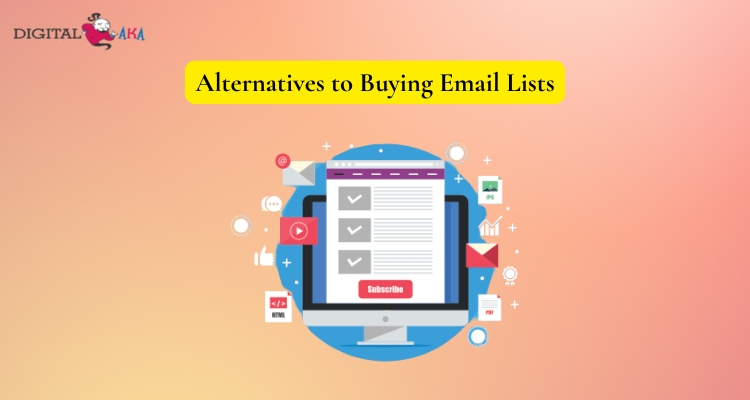
1. Offer Free Stuff (Lead Magnets)
Give something useful for free—like an e-book, checklist, or webinar—in return for someone’s email. This way, people give you their email because they’re interested in what you offer. For example, if you sell fitness gear, offer a free guide on home workouts.
2. Make Your Website Work Harder (Landing Pages)
Create simple and clear landing pages where visitors can sign up for your emails. These pages should have a short message, a strong reason to subscribe, and a big button (call-to-action) that says something like “Get Your Free Guide.” Also, add sign-up boxes on your blog, homepage, and product pages.
3. Use Social Media and Share Helpful Content
Post useful tips, videos, or stories on social media. If your audience finds your content helpful, they’ll want more—and that’s when you ask them to join your email list. You can add a sign-up link in your bio or your posts.
4. Team Up With Other Businesses
Work together with companies that sell different but related products. For example, a coffee shop and a bakery can run a joint giveaway. When people sign up, both businesses get new subscribers who are likely interested in what they offer.
5. Start a Referral Program
Ask your current subscribers to invite their friends. Give them a small reward—like a discount or free item—if someone joins through their referral. People trust their friends, so this can bring in lots of new subscribers.
6. Try Paid Ads (But the Right Way)
Instead of buying email lists, use Facebook or Google ads to send people to your email sign-up page. This costs money, but the people who sign up want to hear from you, which is much better for your business.
What to Do If You Already Buy List Emails
If you already bought an email list, don’t worry — you can still take steps to do things the right way. Here’s how you can handle it.
1. Clean the List: First, use an email checker tool to find and remove email addresses that are fake, wrong, or could cause problems. This helps you avoid sending emails that bounce or get marked as spam.
2. Ask for Permission: Next, send a message to everyone on the list asking if they want to keep hearing from you. This is called an opt-in email. If they say yes, you can add them to your real list. If they don’t reply or say no, remove them.
3. Keep Lists Separate: Never mix your bought list with your regular email list. Keep them separate so you can protect your good list and not hurt your email reputation.
4. Watch the Numbers: Check your email stats. Look at how many emails bounce, how many are opened, and how many people report your emails as spam. If things look bad, stop using that list.
Final Thoughts
In short, buying email lists is a bad idea. It might seem like a fast way to reach more people, but it can cause a lot of problems. You could get into legal trouble or hurt your company’s reputation, and your emails might not even be delivered. Even if they are, most people won’t open or read them.
Instead of taking shortcuts, it’s better to grow your email list the right way. Focus on sharing helpful content, being honest, and building trust. This takes more time, but it works better in the long run. When people sign up because they’re truly interested, they’re more likely to read your emails and buy what you offer.
So, think carefully before buying an email list. Real relationships take time to grow, but they bring better results than sending random emails to people who don’t know you.


